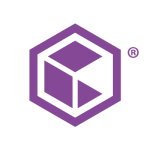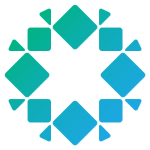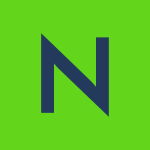What is our primary use case?
We are predominantly using it as a backup target for our products. We are also doing some CIFS shares to remote sites that don't have their own file server infrastructures.
How has it helped my organization?
It gives us flexibility. In a disaster situation, or even in an office relocation, there can be a gap. NetApp CVO allows us to continue to provide service customers with access to their data, even if a physical site is going to be down for a long period of time. It's only really viable if you know a site is going to be down for a long period of time. We've had office relocations and there have been gaps between when the old office closed and the new office opened, during that period of moving stuff over and setting things up. There were a couple of weeks where we were serving the data out of the cloud, rather than out of the physical site. NetApp CVO may have improved our uptime by 1 or 2 percent, because we don't have that much downtime to start with.
It has all the advantages of the real NetApp product. You can provide storage in most of the formats you'd want.
It helps us to keep control of storage costs because it's an OpEx-based model rather than a CapEx-based model. It depends on how you license it. You can have it up and down, almost on an hourly basis. Obviously, we don't do that, we've got it up long-term. But it does have that flexibility to bring up an instance of a client filer for just a short period of time.
It has saved us from having to buy and host another filer somewhere. That would be the only option to achieve the same goal. If we were to buy another filer to provision the capacity we've got in the cloud, the CapEx would probably be at least $200,000, whereas the running costs are not that much. It depends on how you deal with AWS, but we don't pay that kind of money. It probably saves us 75 percent of the cost of buying a filer for real.
What is most valuable?
One of the most valuable features is its similarity to the physical app, which makes it familiar. It's almost identical to a real NetApp, which means you can run all of the associated NetApp processes and services with it. Otherwise, we would definitely have to deploy some hardware on a site somewhere, which could be a challenge in terms of CapEx. Also, in our case, in Europe, in terms of physical real estate, we are trying to reduce the size of our data centers.
What needs improvement?
There is room for improvement with the capacity. There's a very hard limit to how many disks you can have and how much space you can have. That is something they should work to fix, because it's limiting. Right now, the limit is about 360 terabytes or 36 disks.
For how long have I used the solution?
I've been using NetApp Cloud Volumes ONTAP for about two years.
What do I think about the stability of the solution?
The stability has been really good. I don't think we've ever had any major outages. AWS, obviously, doesn't guarantee 100 percent uptime, so I can see that it's not been up since I last restarted it. Rather, it's been up since some AWS event resulted in it migrating to another one of their pieces of hardware. But we've never had it actually crash.
What do I think about the scalability of the solution?
The scalability is good to a point, but there is a hard limit on the capacity. We could, obviously, create another associated instance of it, but it wouldn't be a single name space, and we couldn't do some of the things you can do if you have a lot of multiple, real NetApps. So there are some hard limits to how big a solution you can create.
Day-to-day, it's probably only being used by about a dozen people in our organization, because it is mainly a backup target. There is a small collection of people whose shares live on it, but the majority of the business' files are on the real NetApps on their sites.
It's probably at a size where we're not likely to implement any more. You never know. It's very hard to tell what will go on with our company. But at the moment, it's probably not going to get any larger. We may actually shrink the capacity because we are temporarily storing some stuff for a part of the business that should only be on there for a few months at most, with this COVID.
As an organization, we went ahead wholehearted that anything and everything should be in the cloud — cloud first — and that got tempered a little bit because they started to see the costs. We also hit limitations with some of the software vendors because they're quite small companies and very niche. They don't want to support anything that's in the cloud, so there are limits to what you can put in the cloud.
How are customer service and technical support?
Their technical support is very good. In the early stages, we would get almost instant online support, because we would go into the Cloud Manager and there would be a chat and we could have a chat session with the engineers who were implementing it on the NetApp side.
As things have progressed, we now need to follow a more formal support model, but we usually get a pretty good response, for general, routine questions, within five or six hours. If it were a major incident, you would get much faster support. We've never had a major incident with it.
Which solution did I use previously and why did I switch?
It replaced some physical NetApps that were going to be refreshed. One of the reasons we switched was to limit capital expenditure. Another reason was that it was very much a "Let's go and put as much as we possibly can into the cloud" approach. It fell in with that initiative quite well.
How was the initial setup?
The initial setup was pretty straightforward. The challenges we had were only around the security we put on top of AWS. For me, as an engineer, to be able to do things requires another team to do stuff on the network side or to do stuff on my rights within AWS so that I could deploy it and manage it afterwards. But it is relatively straightforward if you're not fighting other complications.
It took us a couple of days to get it up and working the first time. My colleague did one in the US and it took him about half a day. We did one for another part of the business and that took about three or four hours to get up and running.
Initially, we were just doing an evaluation to see what it was like and if we could actually use it. It went from a trial implementation to going live within a month or two, once we realized it was going to do what we wanted to do.
We had four people involved in the implementation. I was involved, as a storage engineer, and we also had one of our client specialists, a network person, and an info-sec person to validate that the network stuff was within their rules. In terms of maintenance, it's just me, but it doesn't really require a lot of attention because it's cloud-based and it's a NetApp. Generally, once you set them up properly, unless you're changing something, they look after themselves.
What about the implementation team?
It was done by just us. Because it was one of the very early implementations of Cloud Volumes ONTAP, we were working with NetApp and their staff were playing the role that a third-party integrator might have played.
What was our ROI?
We're probably burning about $10,000 a month on it but it's saving us the CapEx and the power and cooling of a real filer. We're likely seeing at least a 50 percent saving.
What's my experience with pricing, setup cost, and licensing?
Choose your disk type properly. Go with the slowest, cheapest disk you can. If you need bigger, faster ones then go for them.
They've got a variety of license schemes. The one we've gone for is where we pay NetApp once a year. They call it the Bring Your Own license scheme. There is a by-the-hour or by-the-month basis from AWS and you can get it that way as well and be billed through AWS. But you may not get the same level of discounts that you would if you were dealing with NetApp directly. If you are committed to having a client filer for an extended period, then go with the NetApp licensing model rather than the AWS-provisioned one.
Ultimately, the more data you save, the more it costs you, because you're paying AWS for the capacity. NetApp is licensed per filer, but there are additional running costs that are paid to AWS. You pay AWS' hosting fee for an EC2 instance, and each one of the disks within the NetApp is EBS storage and you pay AWS for those.
There is potential to save money by moving things off to object storage. The only cost savings we see on it is against having to buy physical hardware.
Which other solutions did I evaluate?
We looked at third-party hosting with either our own, dedicated hardware or shared NetApp hardware. I wasn't that involved in that evaluation process, but I figure that the costs for the work-around were too high or the solution was too complex for us to go with.
CVO enables us to manage our native cloud storage better than if we used management options provided by the native cloud service. With the native solutions, you don't get any of the advantages of the NetApp in terms of being able to deduplicate and having clear management of the snapshot-ing. Also, at the time, there wasn't an easy way to back up to a cloud NetApp. There was nothing. Now they have a slightly different solution where they'll mount it for you but, at that time, you created your own cloud instance and your own cloud file and you managed that. Now, you can access a solution that is managed by AWS or by NetApp.
What other advice do I have?
It is almost identical to having a real NetApp, and it's just that it's remote and it's in the cloud. Almost anything you can do with NetApp locally you can do with a cloud filer.
Go with the cheapest disks to start with, and if you need the performance you can easily transition to using faster disks.
There are limitations, but in general it's robust and easily managed.
Which deployment model are you using for this solution?
Public Cloud
If public cloud, private cloud, or hybrid cloud, which cloud provider do you use?
Amazon Web Services (AWS)
Disclosure: PeerSpot contacted the reviewer to collect the review and to validate authenticity. The reviewer was referred by the vendor, but the review is not subject to editing or approval by the vendor.
















